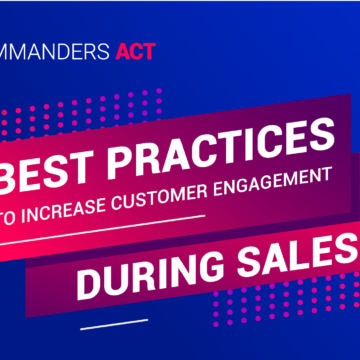Benefits of using a good TMS
14/02/2017 |

Benefits of using a tag management system are more than it may seem. A TMS will not only allow you to manage tags efficiently, it will also let you normalize data: the first step towards a global data management project.
Main benefits of tag management:
1/Marketing professionals: become more autonomous and agile
As described in this article, the main purpose of TMSs is to make you more autonomous and agile. Since marketing teams no longer need help from technical staff to deploy tags, they become more agile and independent from the IT department. This impacts sales directly by limiting opportunity costs resulting from lengthy setup periods.
A TMS also allows deactivating tags that take too long to fire, which manual tag management could not do. When a campaign ends, tags can easily be deleted without any intervention from technical staff. This prevents obsolete tags from piling up, data from leaking and lets all teams save time and be more productive. Some time ago, it was not uncommon to see outdated tags pile up and negatively affect sites’ loading speed.
TMSs are seen as a solution to manage tags’ lifecycles; a good TMS also allows managing the lifecycle of data.
2/Improve your website’s performance
When you replace all the tags present on your site with a single code block that contains them, you speed up loading. Pages will load faster because tags will not pile up anymore; new tools allow optimizing tags and solutions use hybrid technologies: they combine client and server-side data collection. Server side data collection allows collecting information once and distributing it to several partners, as opposed to client side data collection which requires the same piece of information to be collected as many times as there are partners you want to share it with.
But loading speed is not the only benefit of using a TMS: if used correctly, it can help you personalize content in real time (customize messages, recommend products, etc.) and improve your site’s performance indicators significantly (conversion rates, average basket size, etc.).
3/Rationalize marketing
The data layer is the variable library that is used by your tag management solution. Thanks to it, you can have your different applications share harmonized data and communicate with each other. The data layer will provide more structured information, thanks to the data library applications will draw information from.
The quality and reliability of the shared information will be improved; intervention from technical teams will be simplified as well.
Thus, information collected through a particular channel will be used with the same user on a different channel. You will deepen customer knowledge and be able to offer a better, personalized experience to each one of them.
4/Governance
Until recently, many e-commerce sites did not use a TMS. This prevented marketing teams from knowing exactly how many tags were placed on the site and how many of them were obsolete. Which ones delayed pages’ load time? How many of them were working correctly?
Using a TMS gives you absolute control over your tags: you can list them, perform quality control checks, measure loading time for each tag, manage who can edit them, among many other possibilities.
Keep in mind that tags are code blocks that collect information and share it outside the website. Controlling one’s tags is limiting data leakage.
5/Quality
A TMS ensures greater quality thanks to:
- Quality tests that are performed on the container and all of its components prior to going live: you can easily identify dysfunctional tags and save an important amount of time since you won’t need to contact your IT department.
- Performance monitoring tools that let you identify problems with tags immediately (loading time, accuracy of the variables populating the tags).
- Responsiveness in case of problems (possibility to rollback tag or container versions in minutes)
- The possibility to schedule tags’ publication (conditional activation, configuration of the tag’s lifetime).
6/User experience
A TMS contributes to an enhanced user experience by simplifying the tag management process significantly: it lets marketing teams manage their extensive tag portfolio, coordinate interaction between partner solutions and effectively deliver the right message to the right audience at the right time.
7/Real-time conversion deduplication
Deduplication has become a key issue for e-commerce websites. It is the conditional activation of conversion tags based on specific rules, taking into consideration touch points throughout customer journeys. A good TMS provides configurable/automatic real-time deduplication, helping you save time and cut acquisition costs. A few years ago, deduplication was done manually and very often required between one and two days’ work a week, resulting in significant financial loss. Deduplication is key to performance marketing professionals; opportunity costs related to deduplication could total as much as 35% of the global amount invested in such marketing levers.
8/Cost reduction
A good TMS helps saving time and money. In-house tag management is very costly, in terms of the amount of human resources that need to be allocated to that particular field (marketing, IT staff). Data management also requires a significant amount of resources. In addition to this, there are other costs that are less easy to control, such as those resulting from human error, data leakage, or a lengthy tag implementation process.











